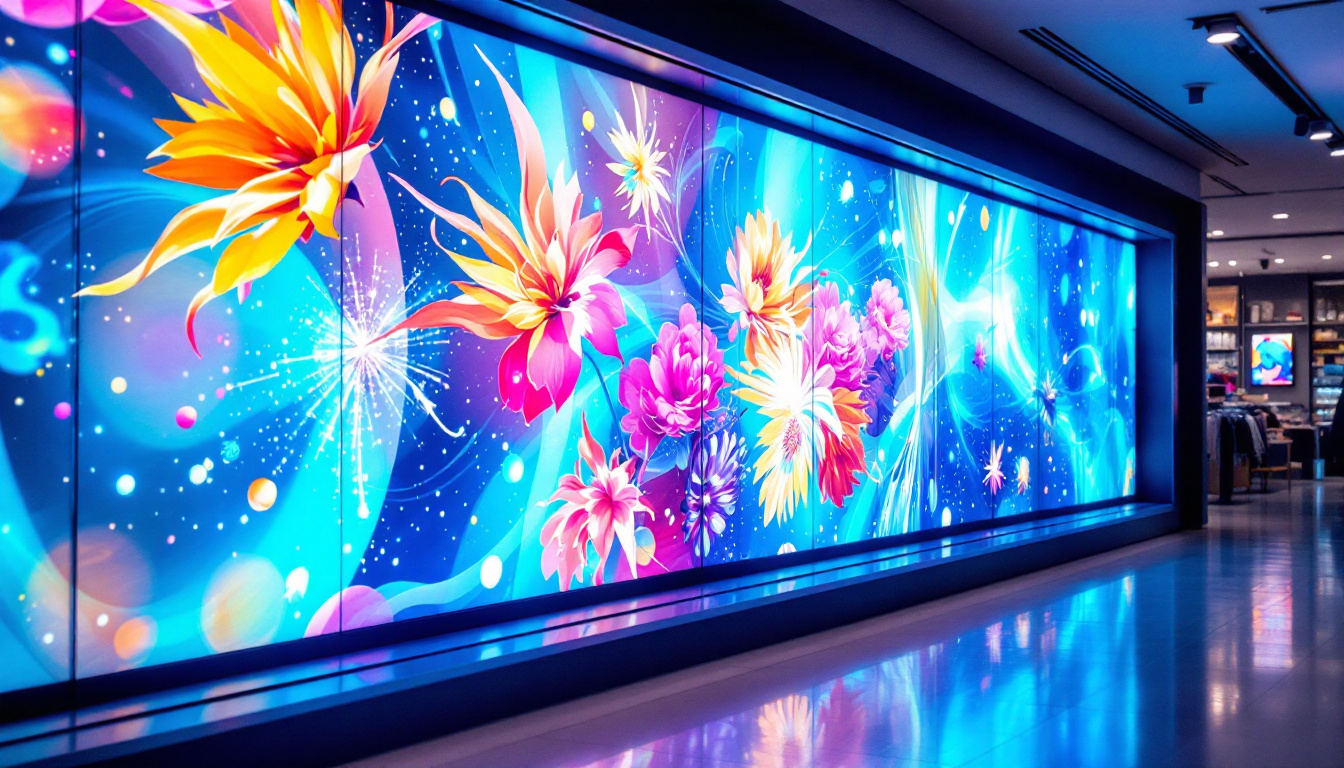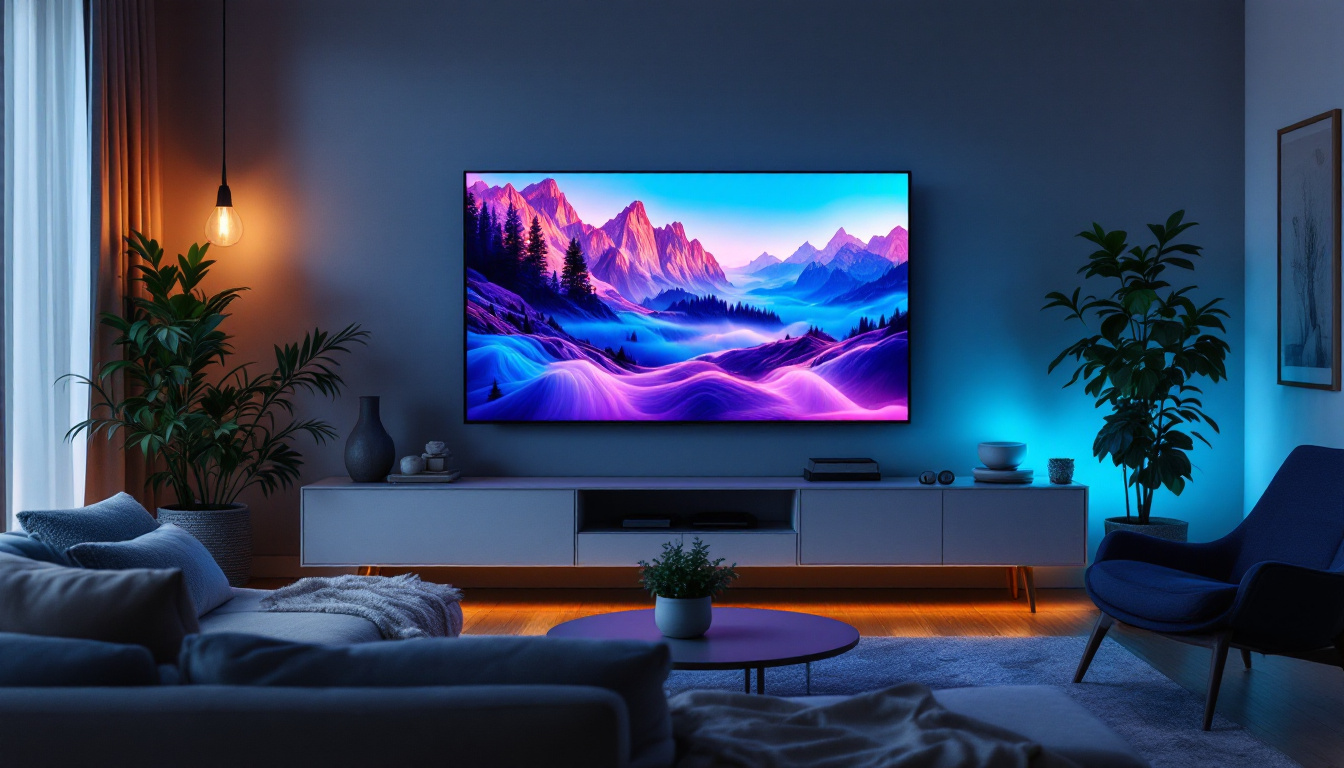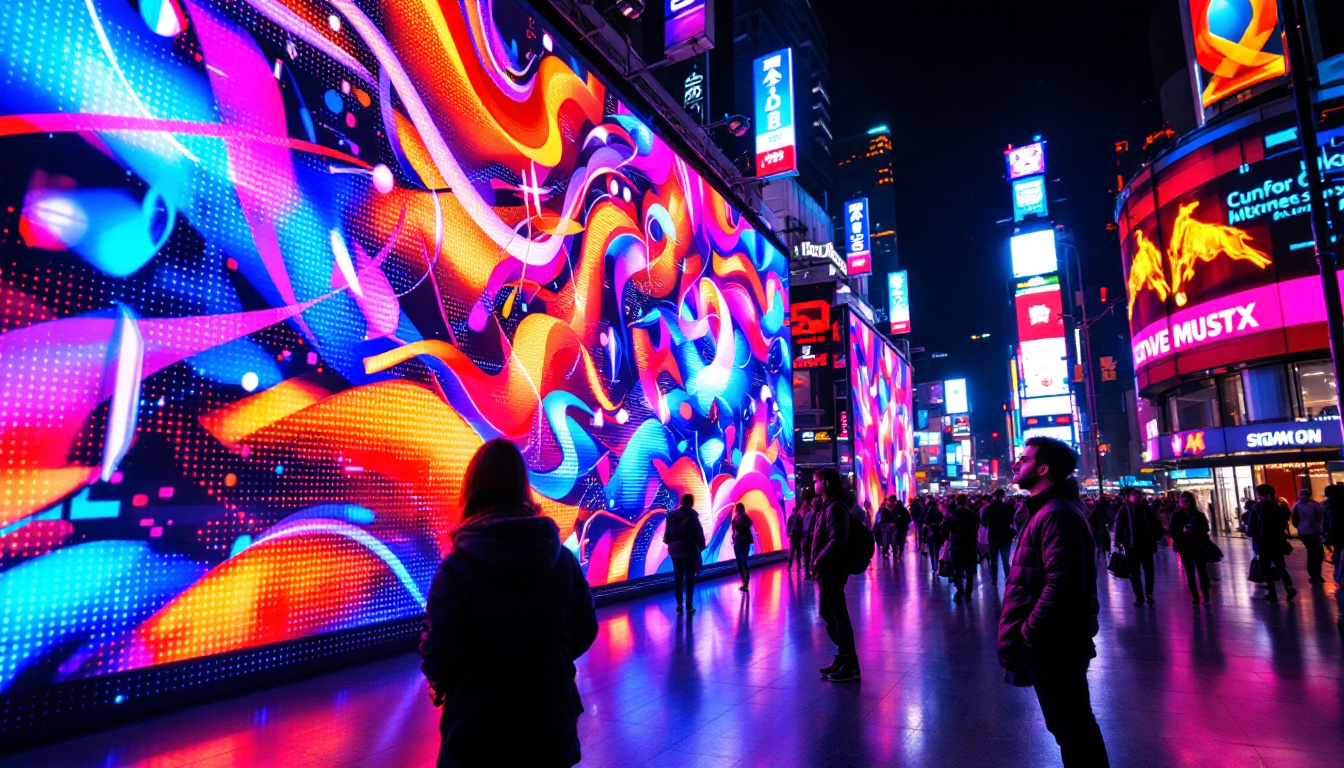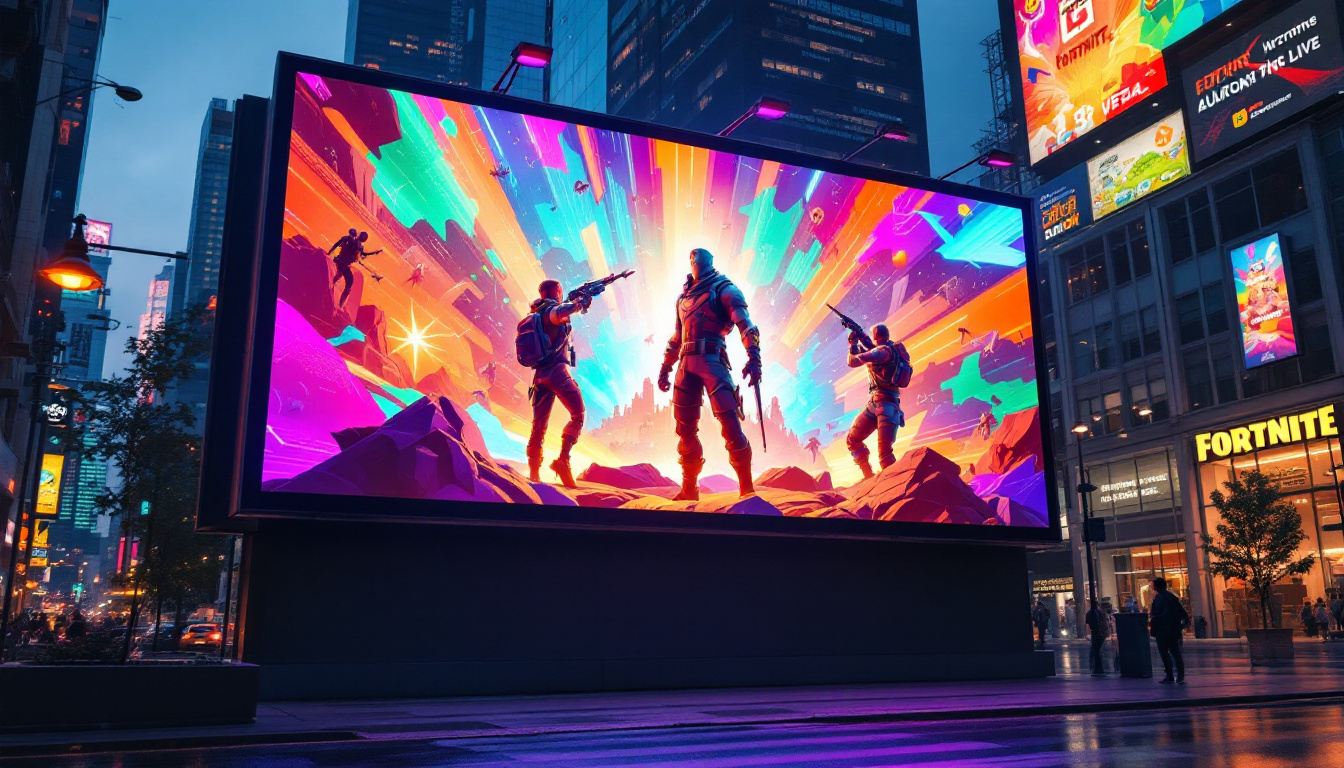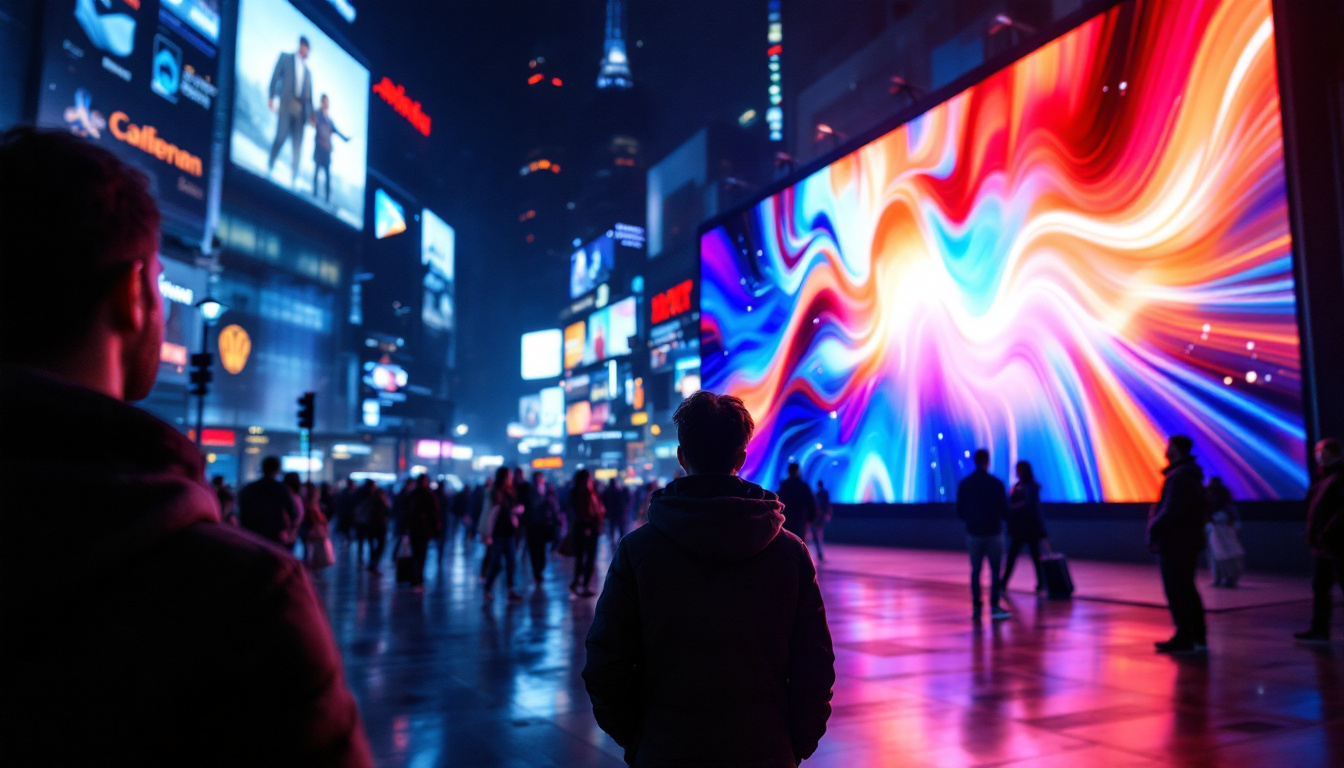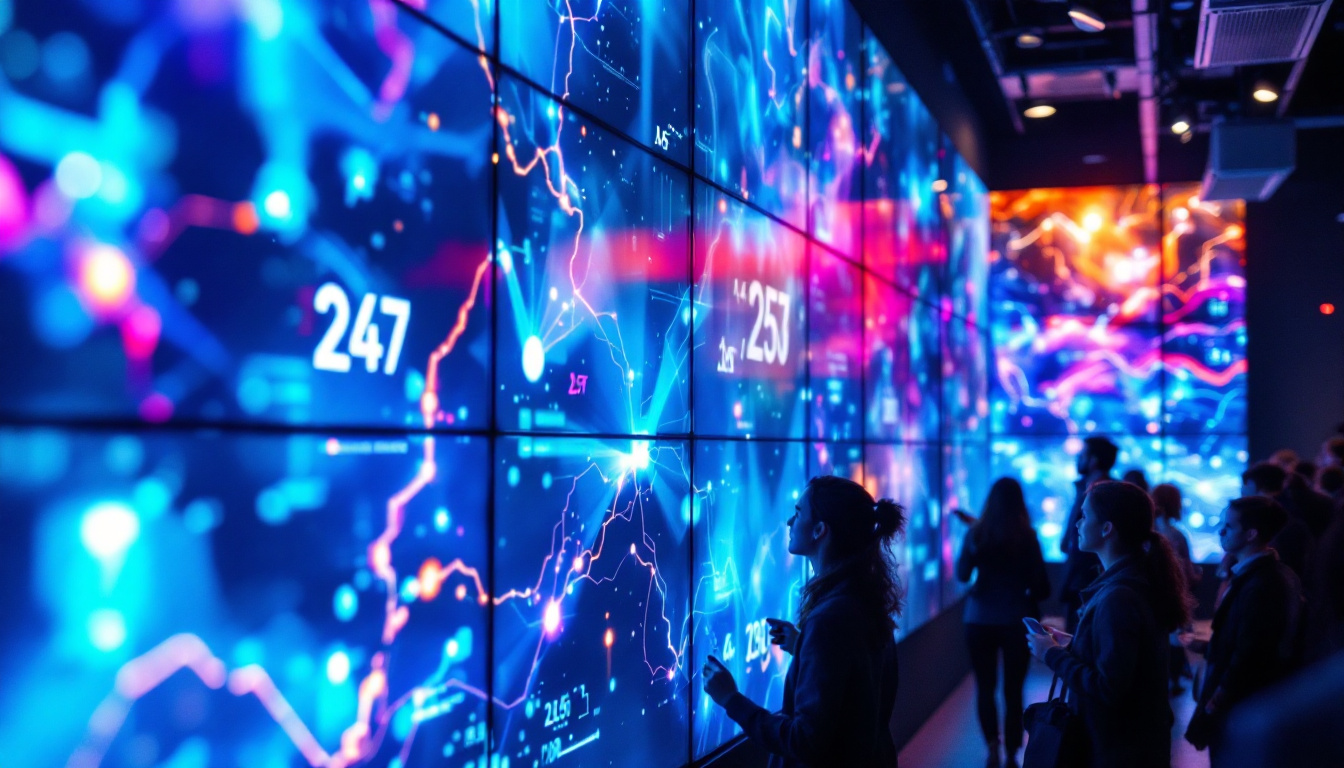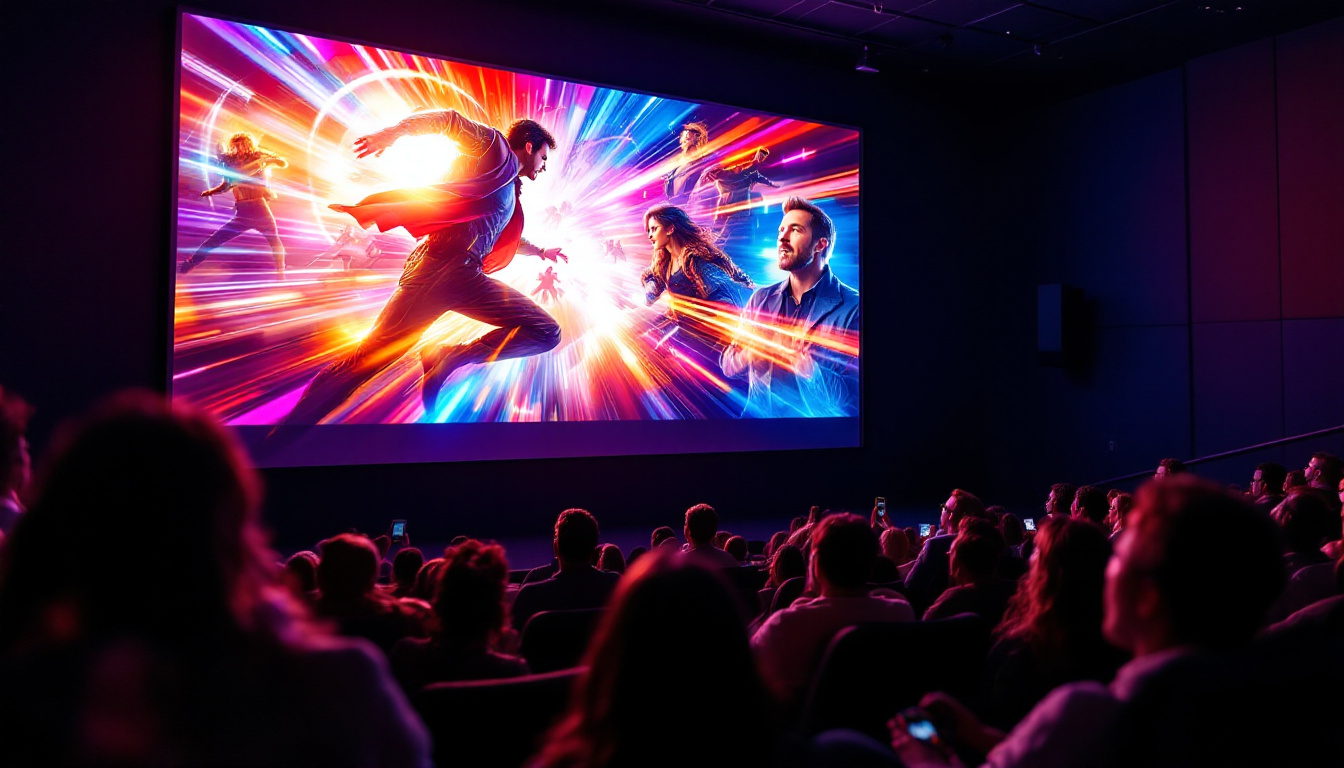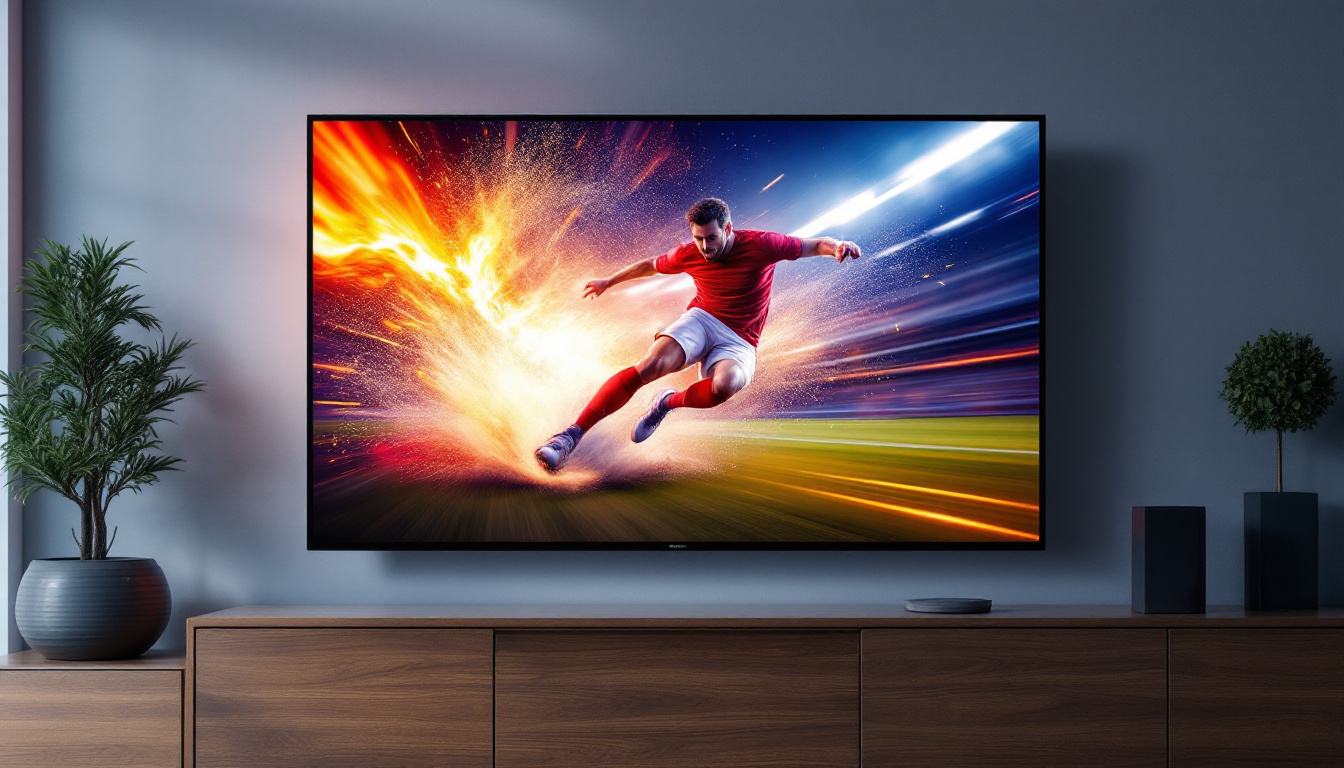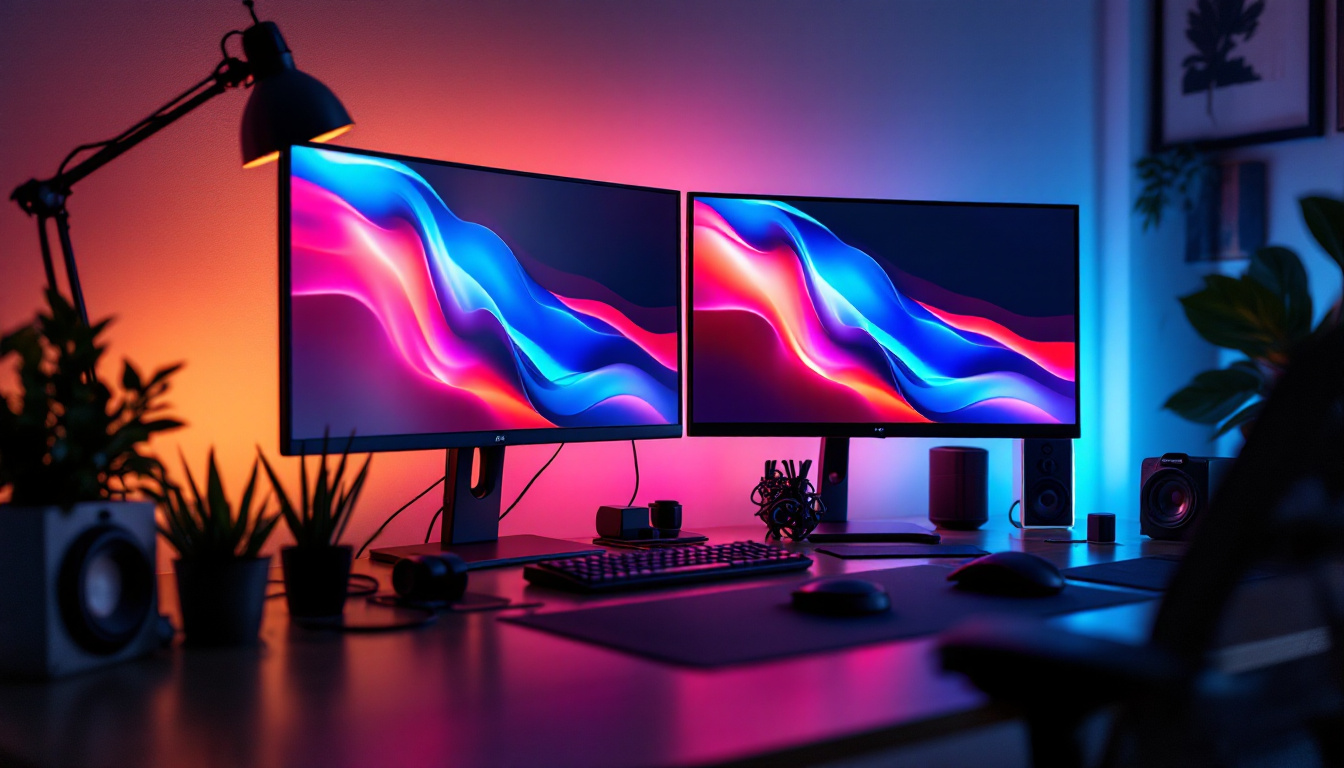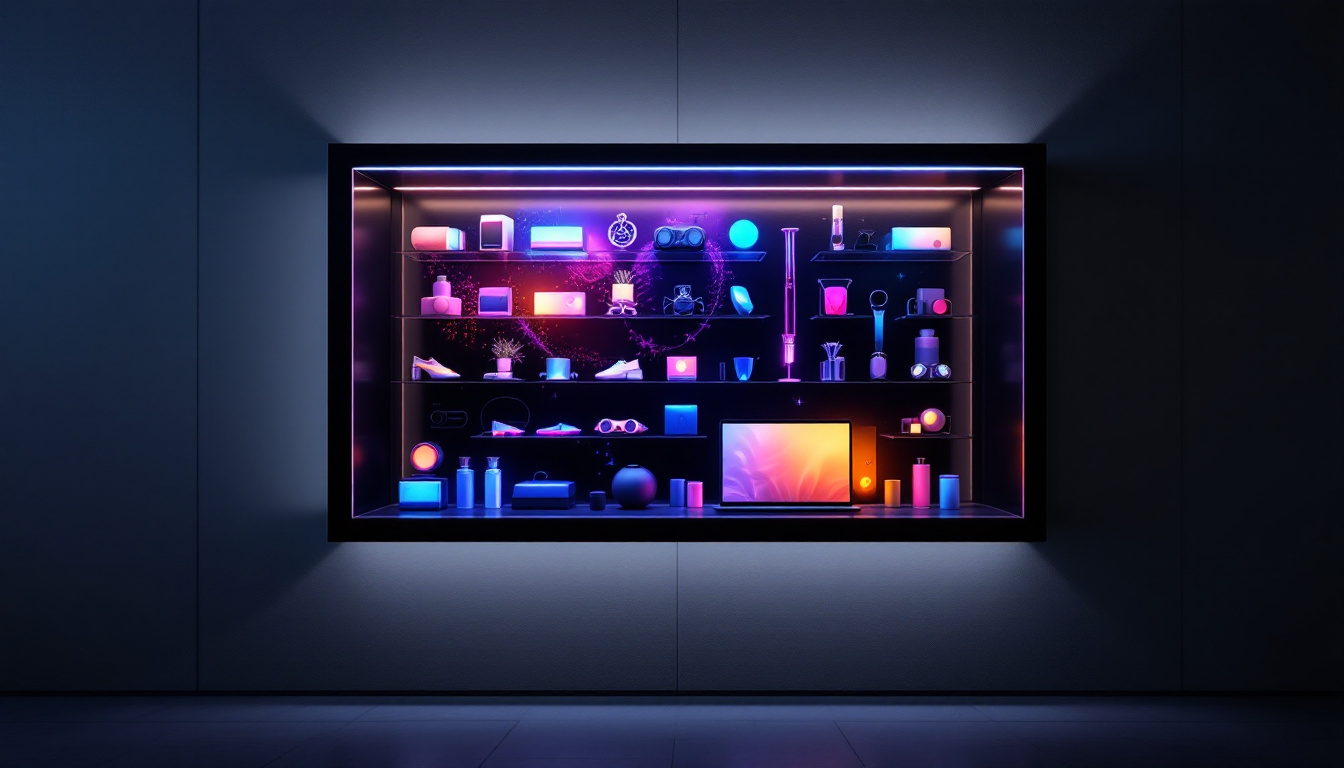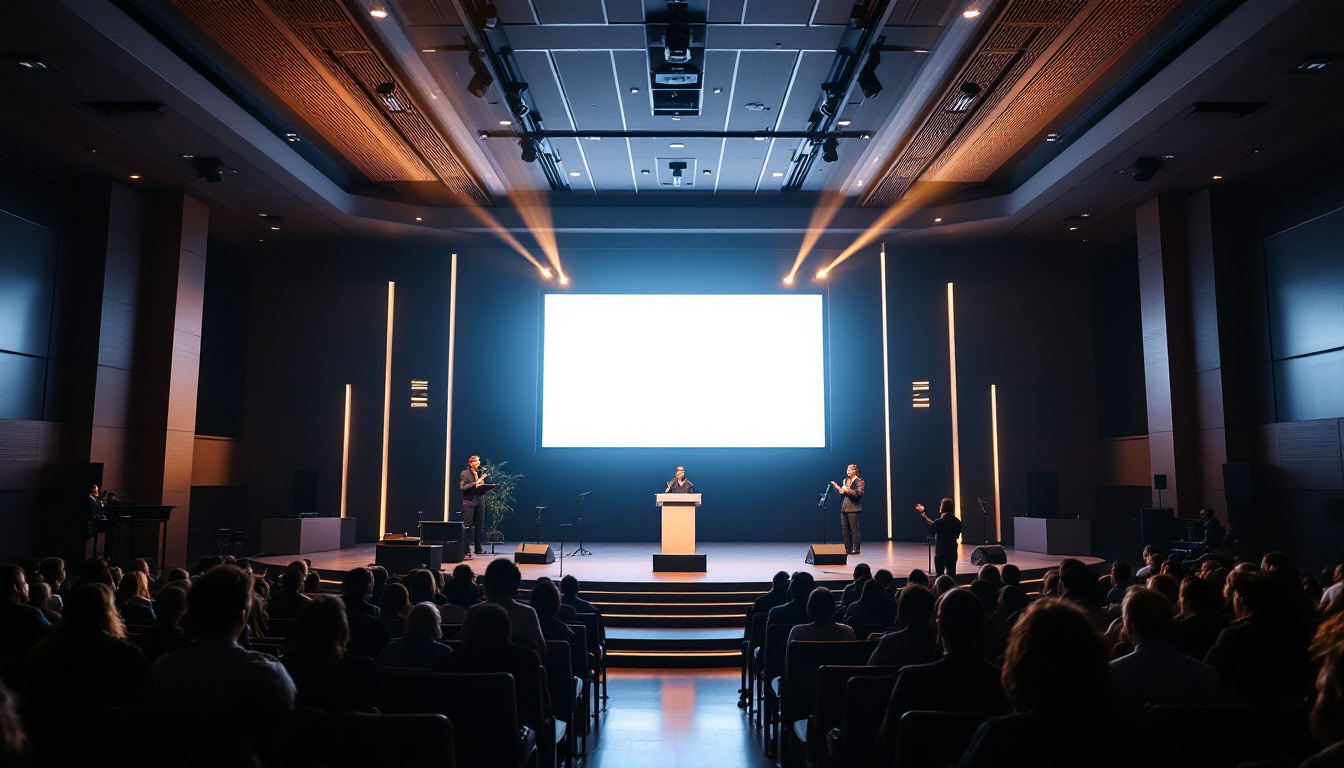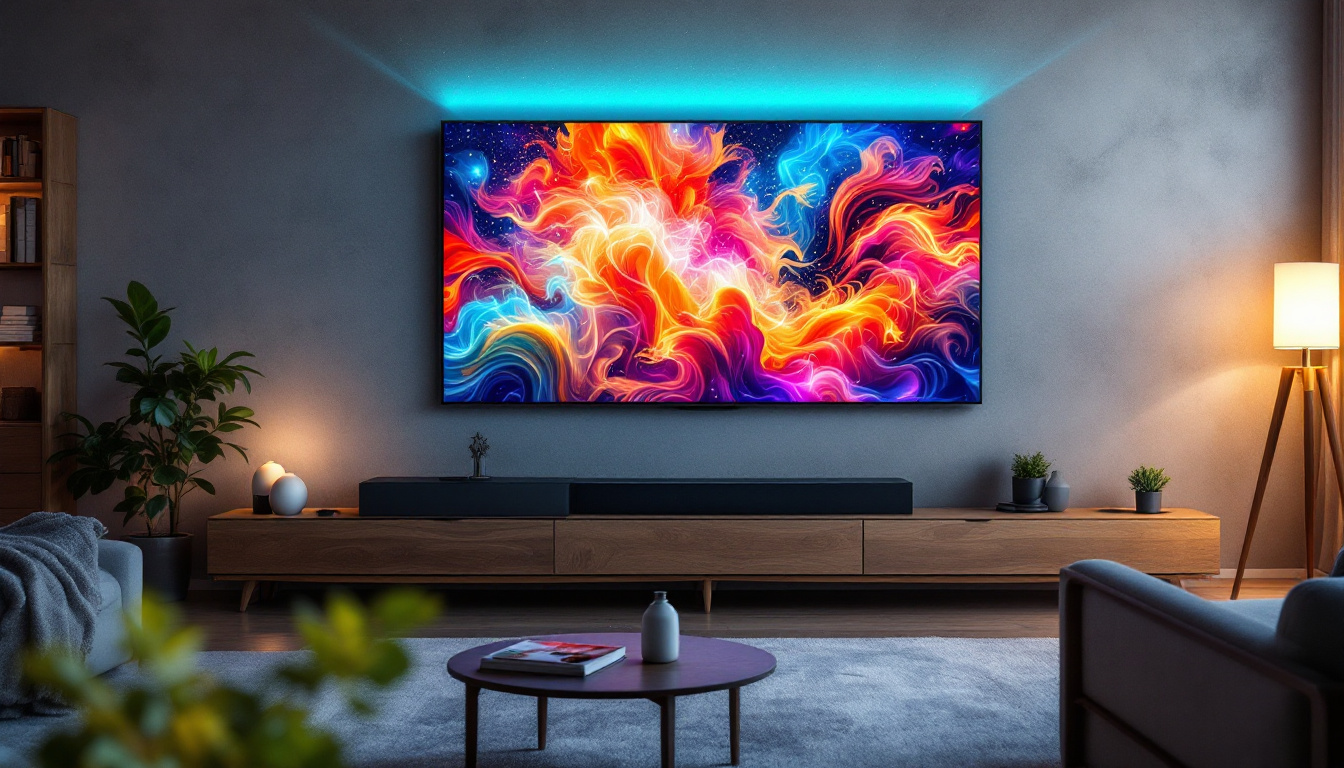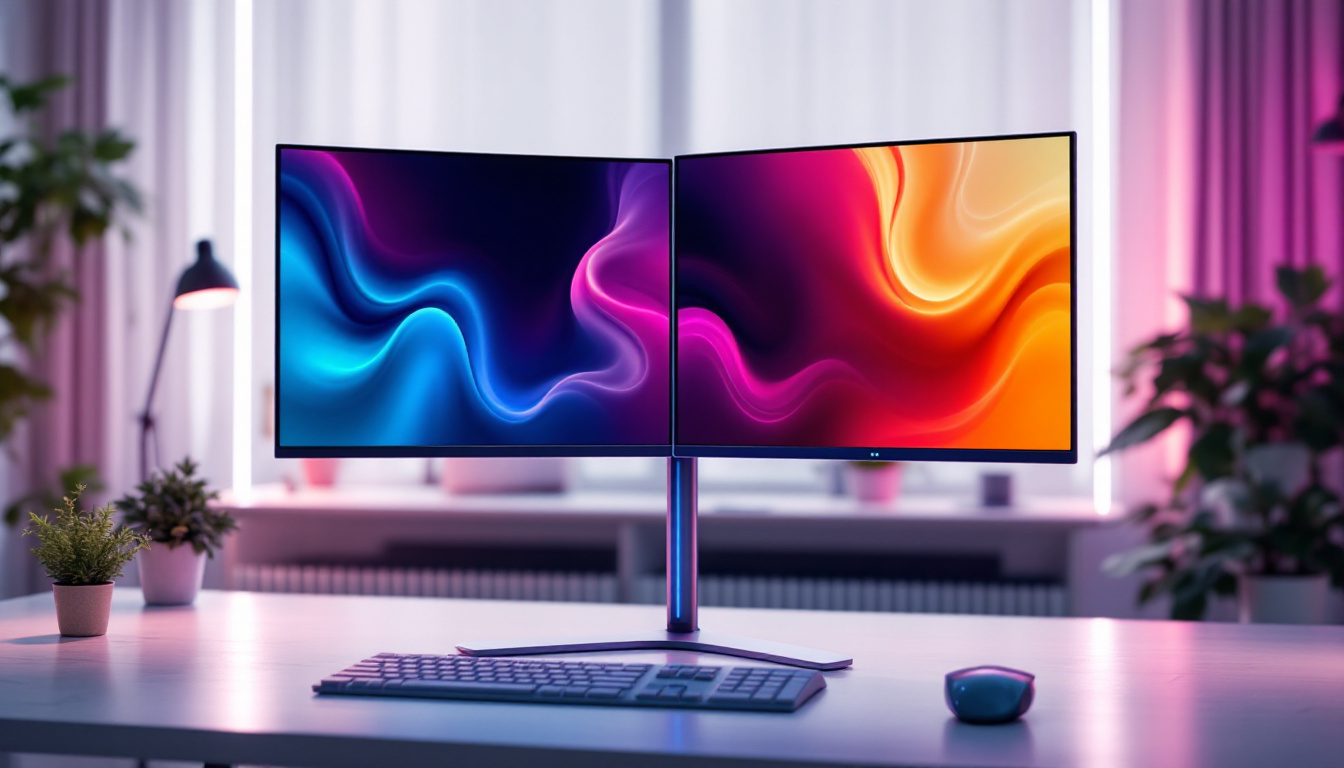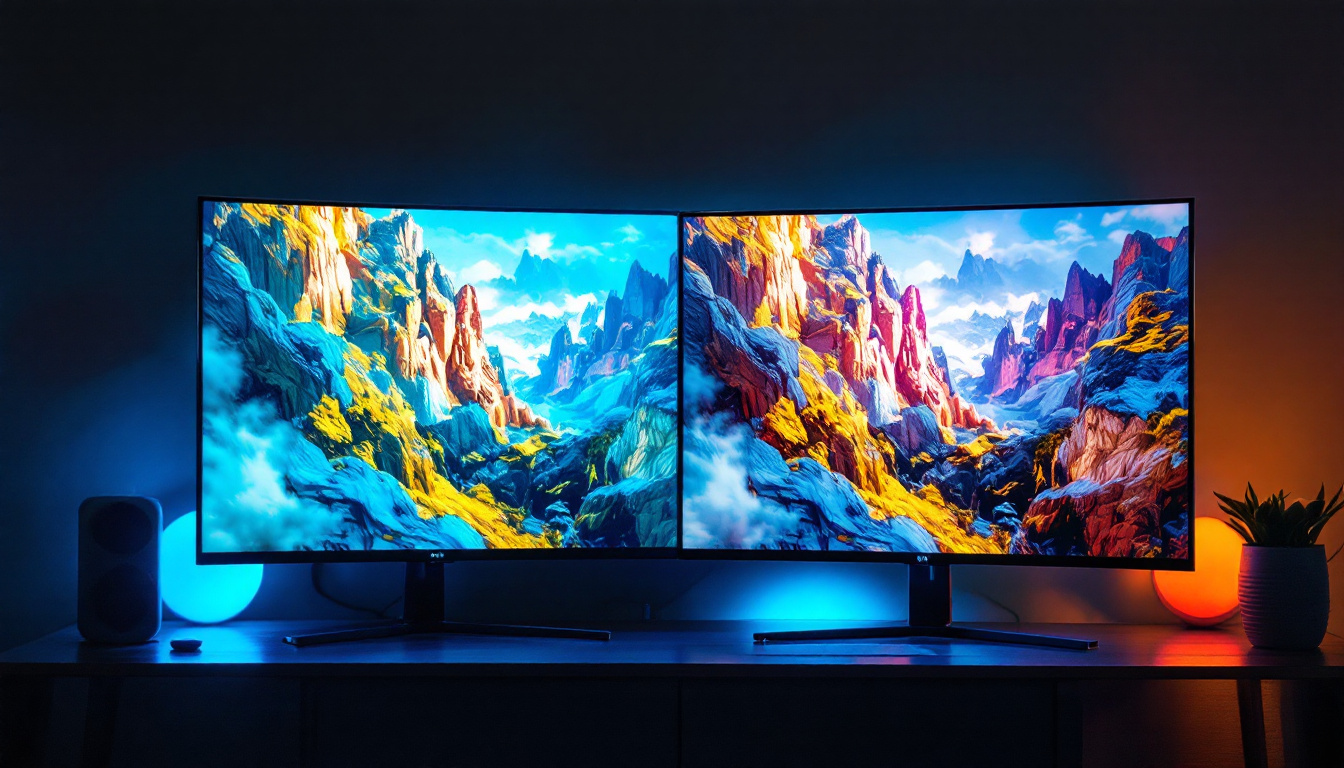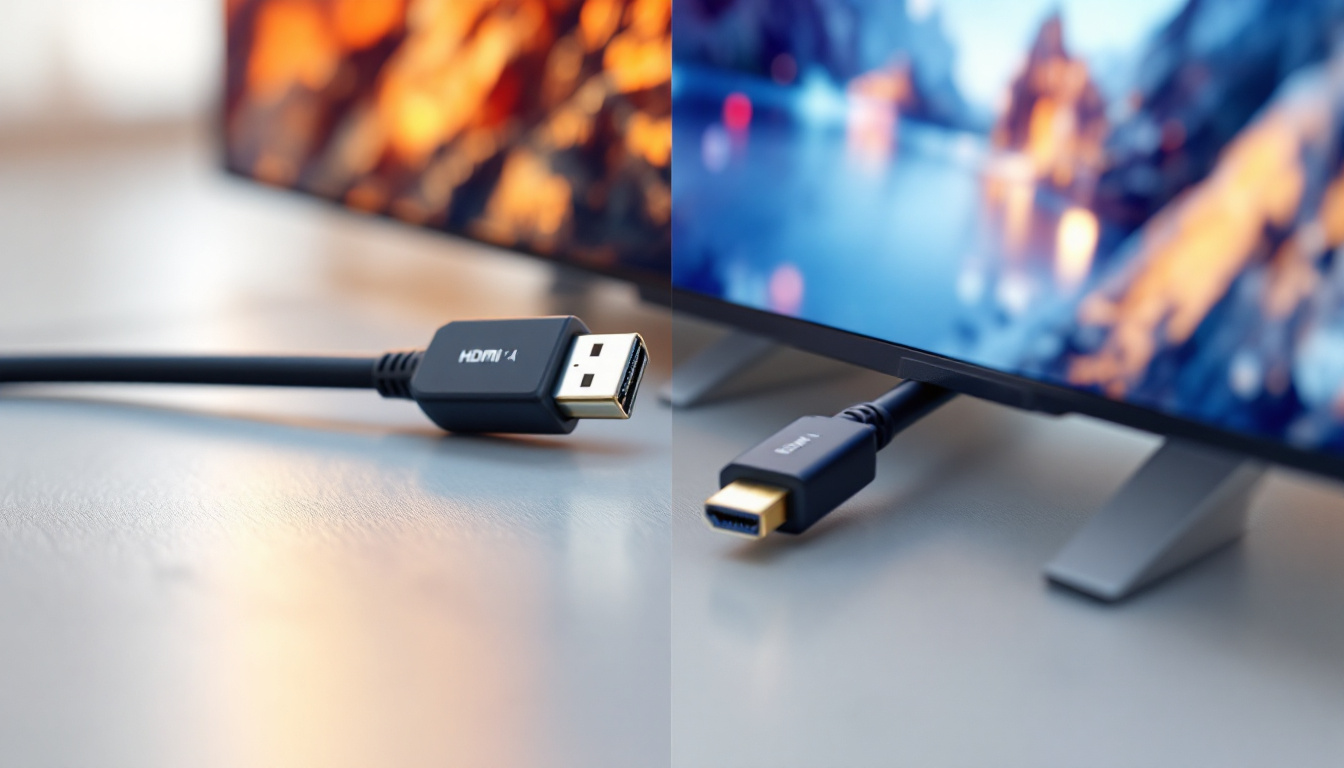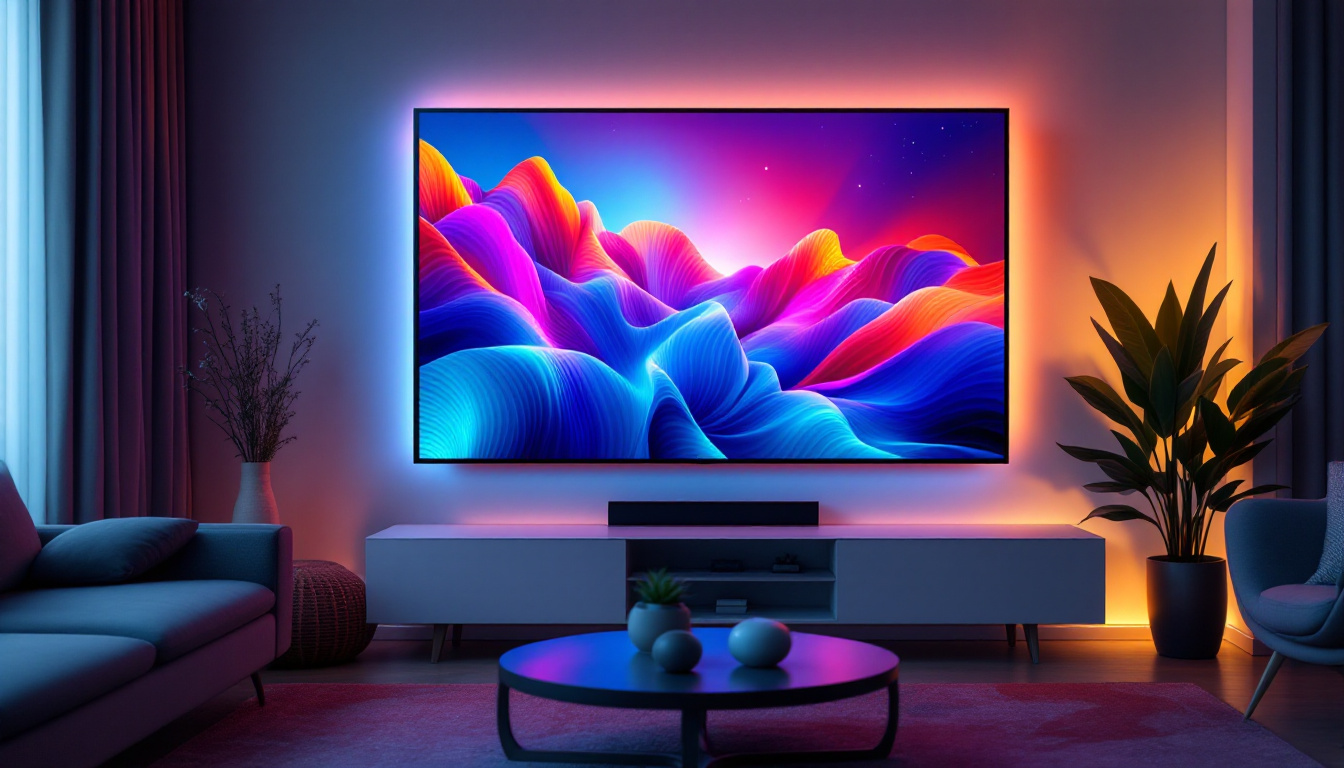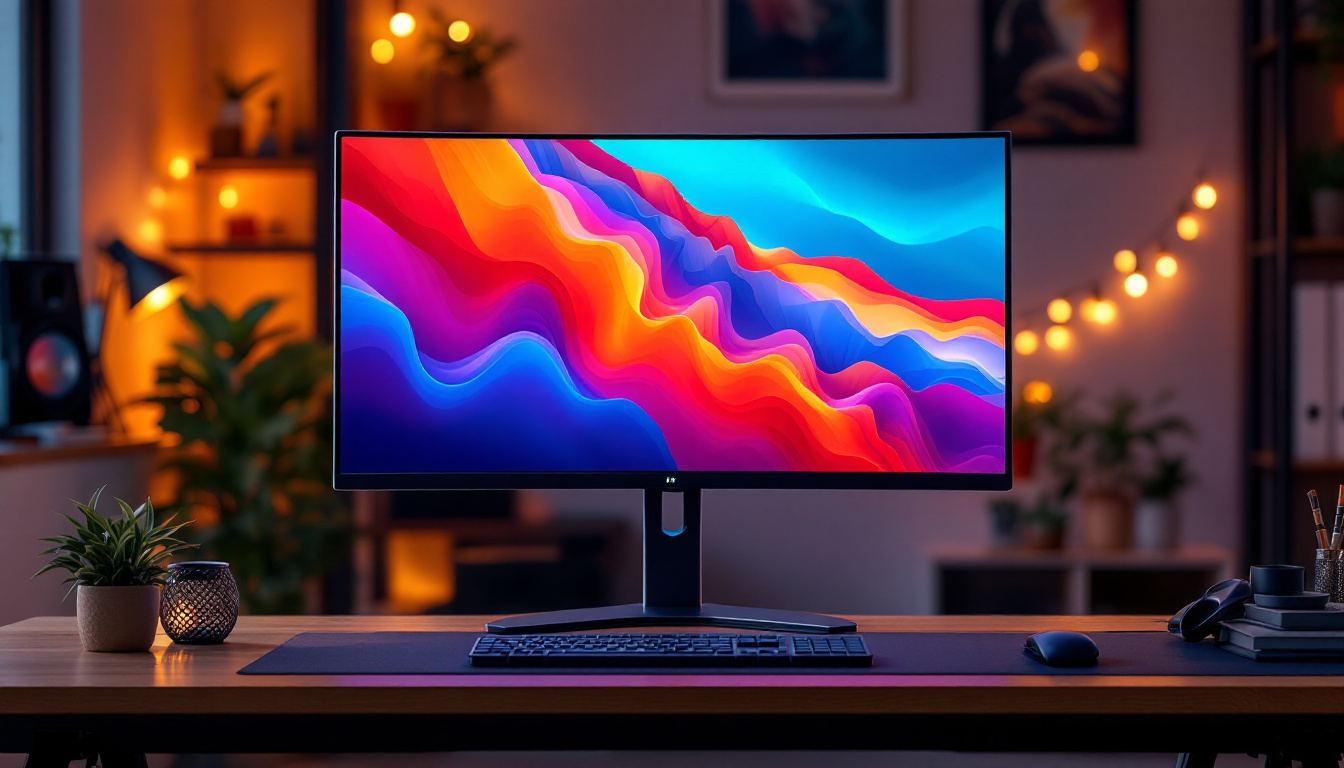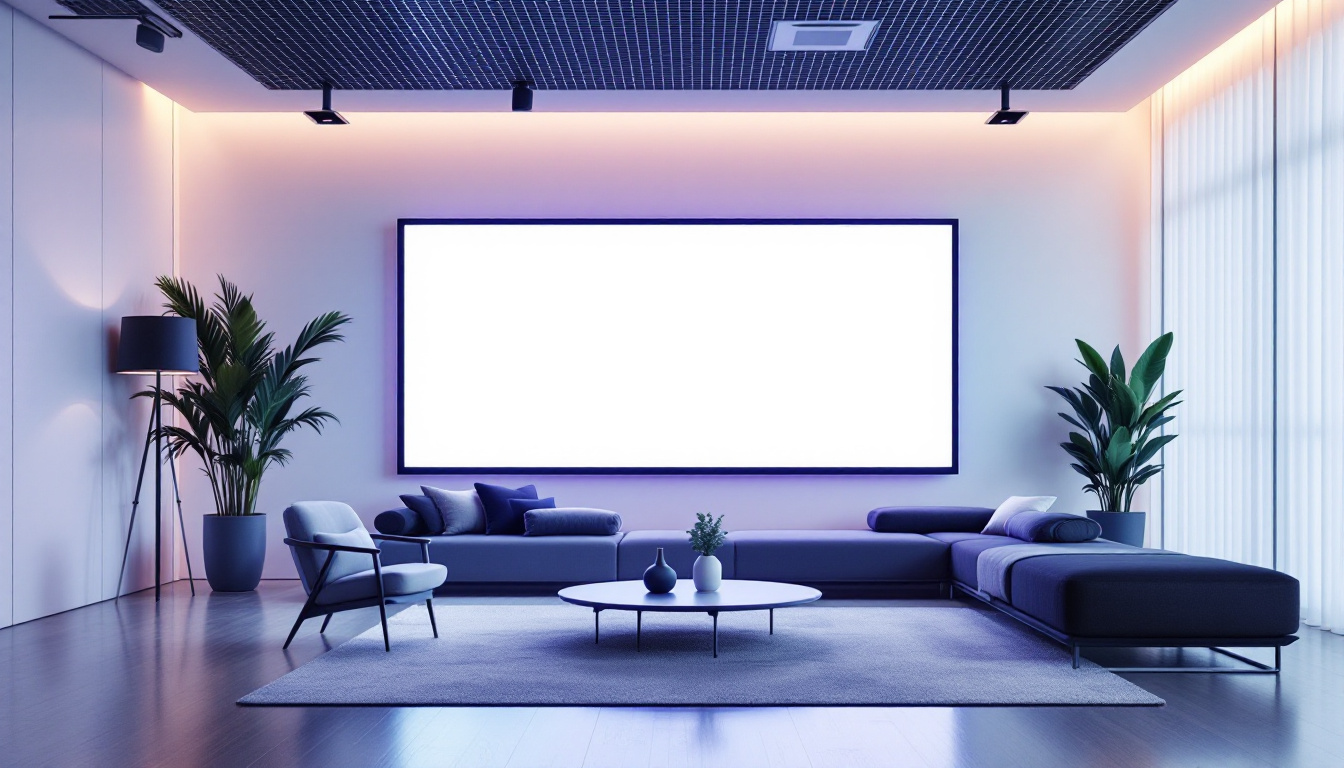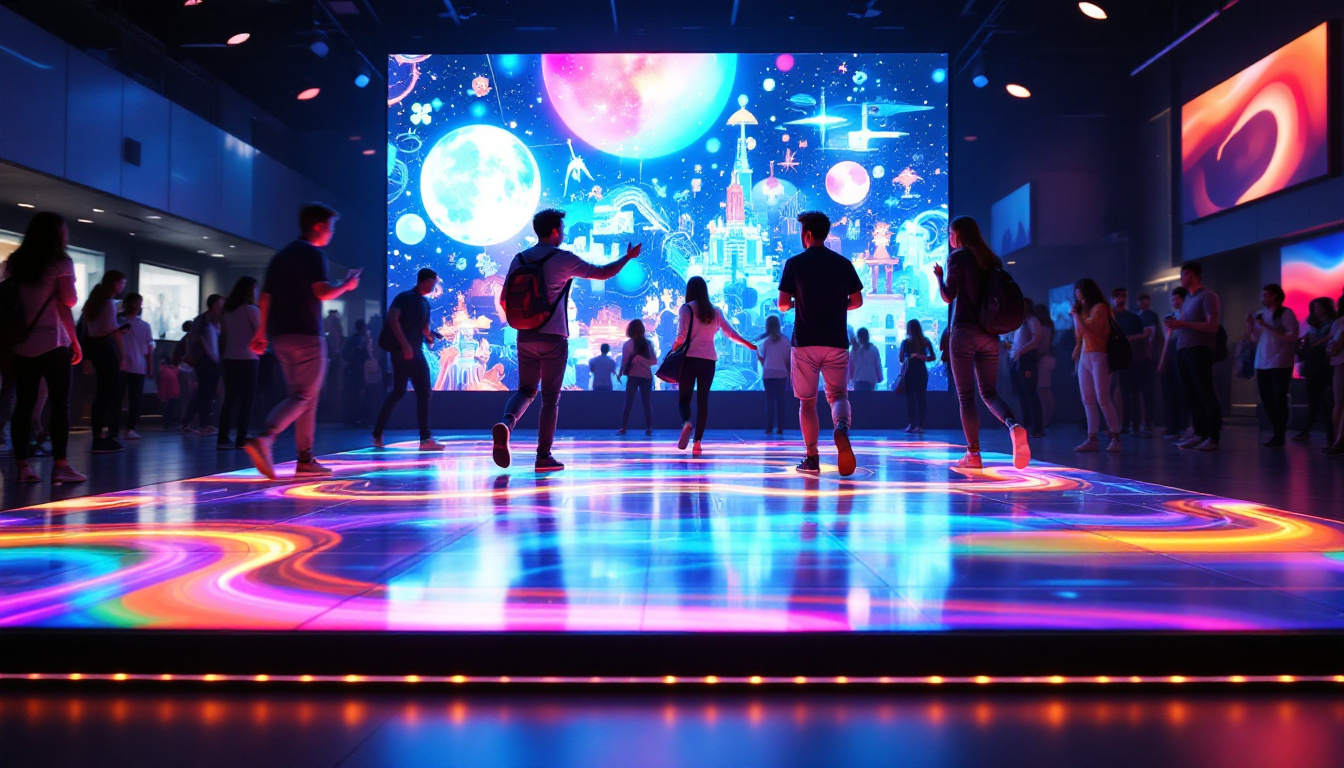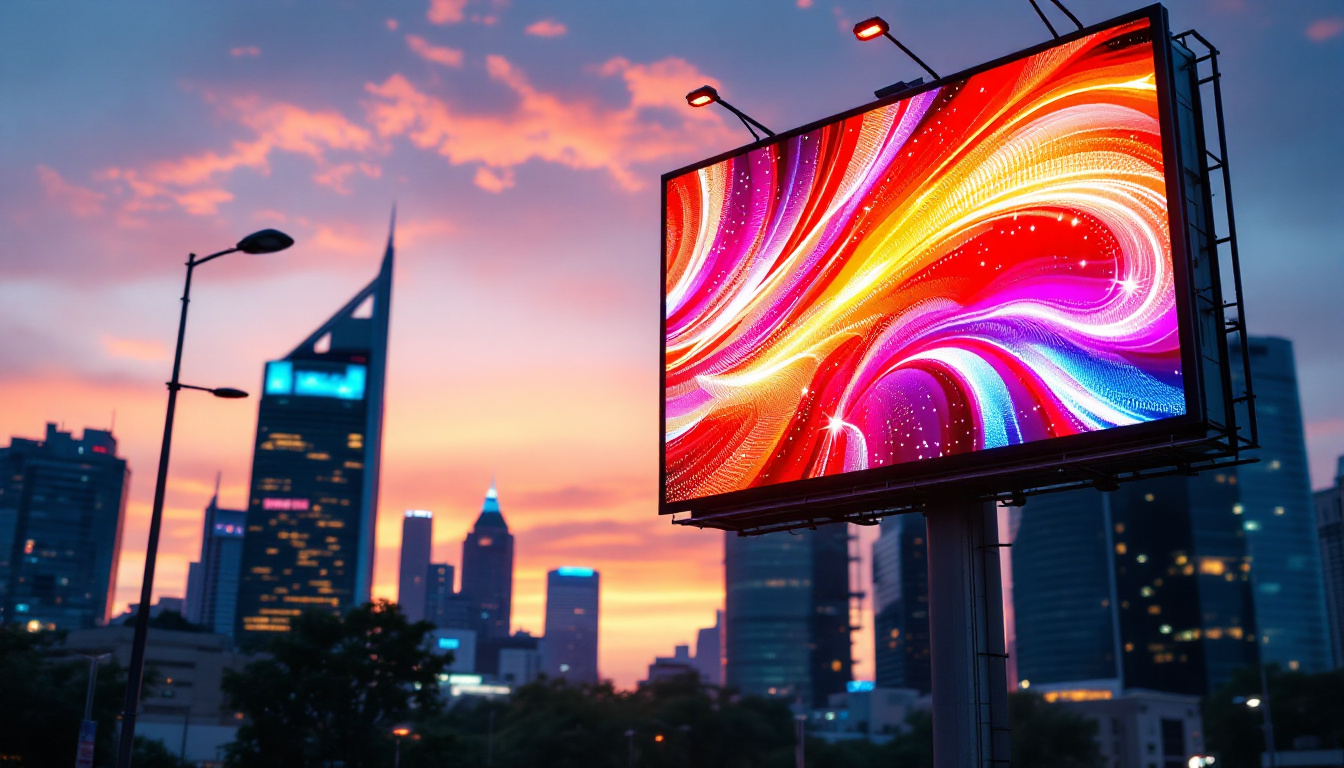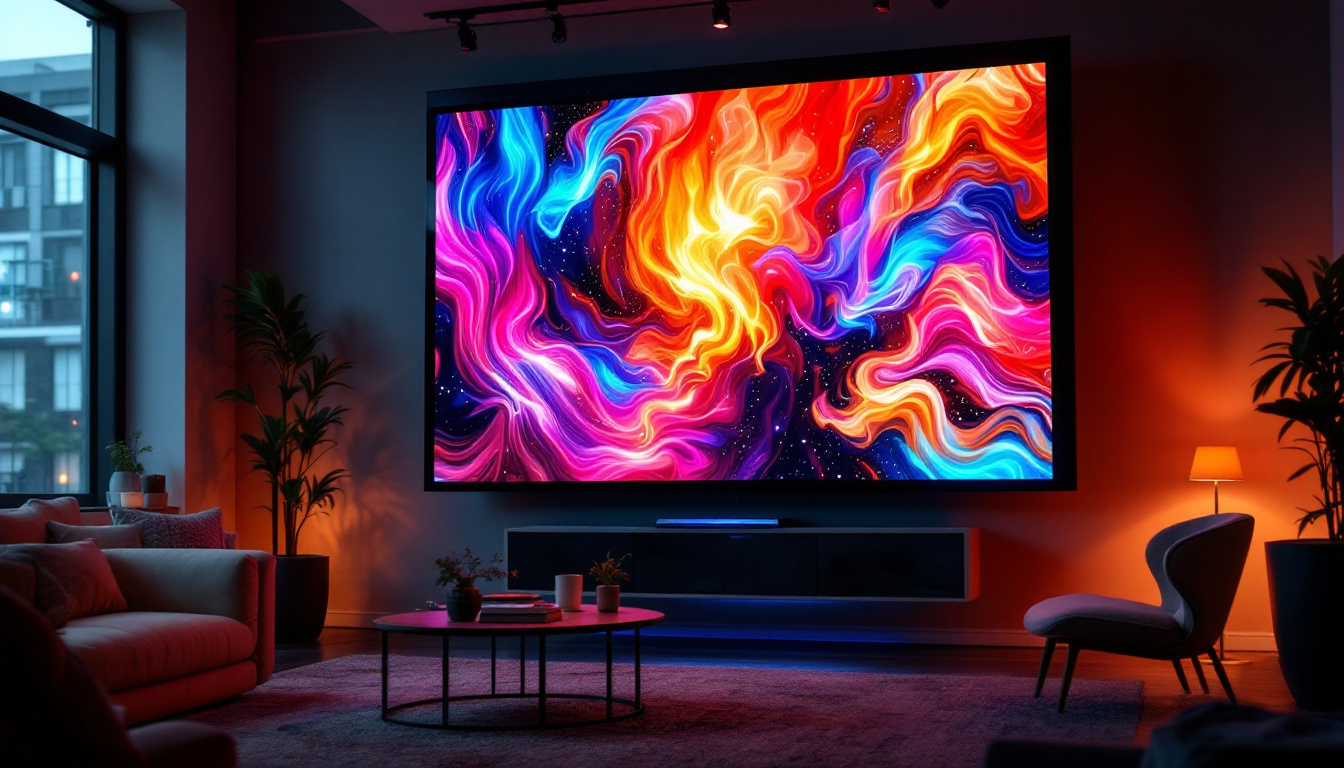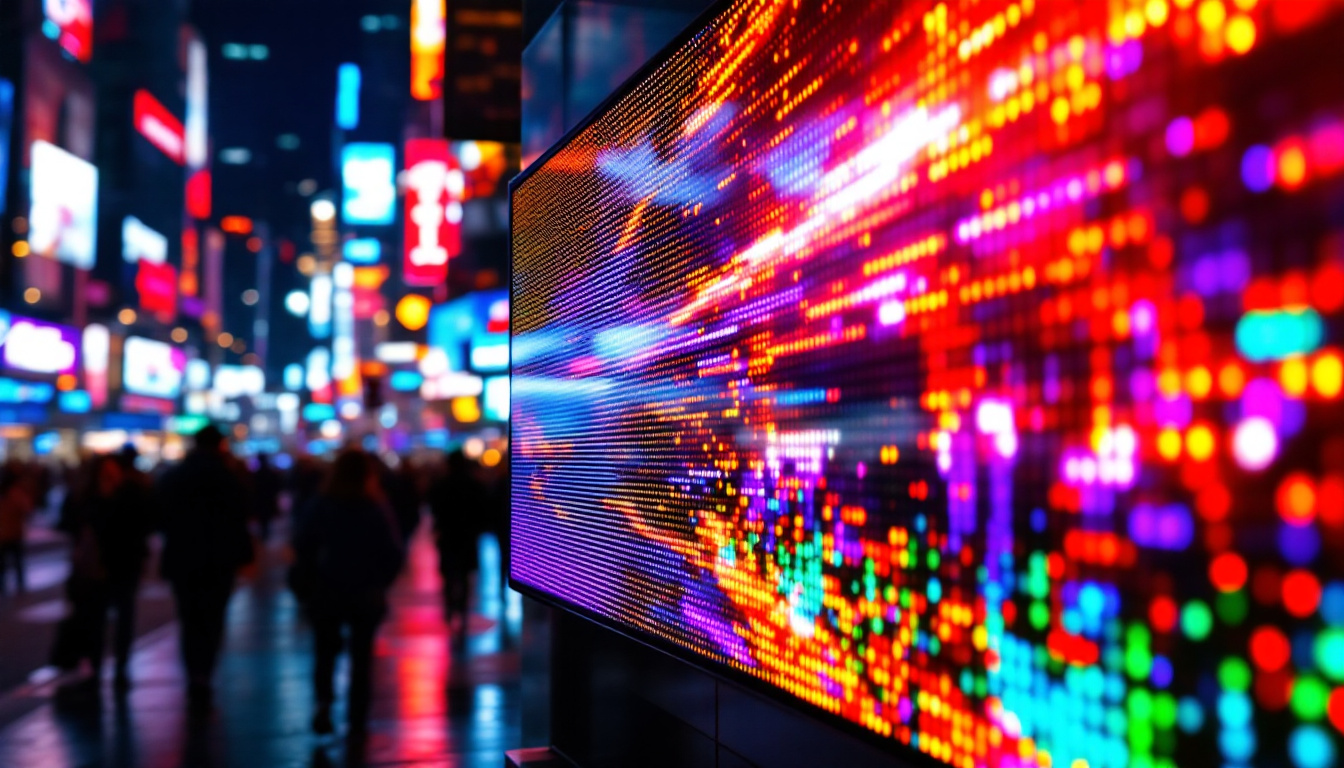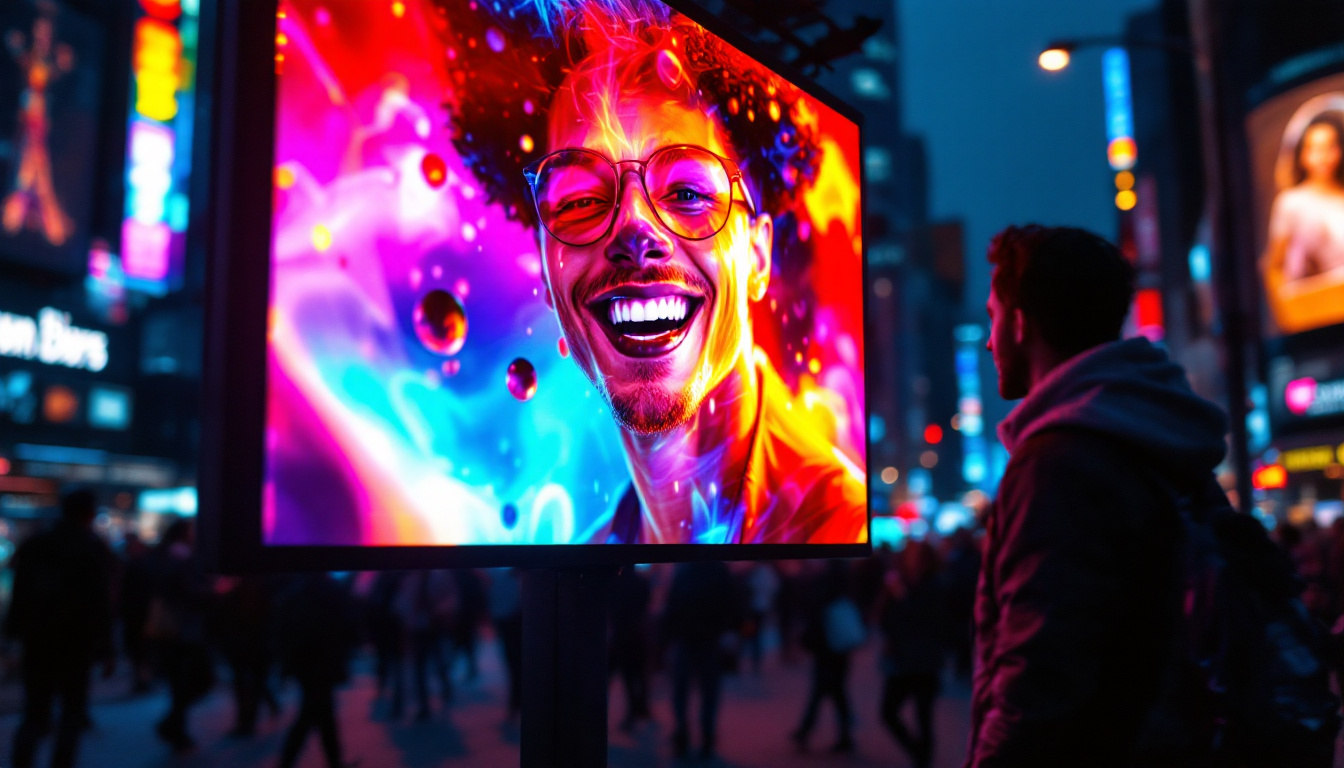In the competitive landscape of retail, visual merchandising plays a crucial role in attracting customers and enhancing their shopping experience. Among the various tools available to retailers, LED displays have emerged as a powerful medium for showcasing products and promotions. This article delves into the significance of LED displays in department store showcase walls, exploring their benefits, design considerations, and the impact they have on consumer behavior.
Understanding LED Displays in Retail Environments
LED (Light Emitting Diode) displays are becoming increasingly popular in retail settings due to their vibrant colors, high brightness, and energy efficiency. These displays can be used in various formats, from large wall installations to smaller point-of-sale screens, providing a versatile solution for retailers.
The Technology Behind LED Displays
At the core of LED technology is the ability to emit light when an electric current passes through a semiconductor material. This results in a display that can produce bright and colorful images, making it an ideal choice for attracting attention in a busy retail environment. The modular nature of LED displays allows for customization in size and shape, enabling retailers to create unique showcase walls that fit their branding and layout.
Moreover, advancements in LED technology have led to the development of high-resolution displays that can present detailed images and videos. This capability enhances the visual appeal of products, making them more enticing to potential buyers. Retailers can now utilize 4K and even 8K resolution displays, which provide stunning clarity and detail, ensuring that every product is showcased in the best possible light. This level of detail is particularly beneficial in sectors like fashion and electronics, where the quality and features of the products can be highlighted effectively.
Benefits of Using LED Displays
One of the most significant advantages of LED displays is their ability to capture customer attention. The dynamic nature of these displays allows for the showcasing of promotional content, seasonal sales, and new product launches in a way that static displays simply cannot achieve. This interactivity not only draws customers in but also keeps them engaged longer. Retailers can employ motion graphics and videos that tell a story or demonstrate product usage, creating a more immersive shopping experience that resonates with consumers.
Additionally, LED displays are energy-efficient compared to traditional display technologies. This efficiency translates to lower operational costs for retailers, making it a sustainable choice in the long run. Furthermore, the longevity of LED technology means that retailers can expect a longer lifespan from their displays, reducing the frequency and cost of replacements. The durability of LED displays also means they are less prone to damage from environmental factors, such as temperature fluctuations or humidity, which can be particularly important in outdoor or semi-outdoor retail settings. As a result, many retailers are increasingly viewing LED displays not just as a marketing tool, but as a long-term investment that can enhance their overall brand presence and customer experience.
Design Considerations for LED Showcase Walls
When integrating LED displays into department store showcase walls, several design considerations must be taken into account to maximize their effectiveness. From placement to content strategy, each element plays a vital role in ensuring the display achieves its intended purpose.
Placement and Visibility
The placement of LED displays is critical to their success. Retailers should consider high-traffic areas where customers naturally congregate, such as entrances, checkout lines, and prominent display sections. Ensuring that the displays are at eye level can significantly enhance visibility and engagement.
Moreover, the size and scale of the display should be proportionate to the surrounding environment. A massive LED wall in a small boutique may overwhelm customers, while a small display in a large department store may go unnoticed. Striking the right balance is essential for effective visual merchandising.
Content Strategy
Content is king when it comes to LED displays. Retailers must develop a content strategy that aligns with their brand identity and resonates with their target audience. This involves creating visually appealing graphics, videos, and animations that highlight products in an engaging manner.
Additionally, the content should be regularly updated to reflect current promotions, seasonal trends, and new arrivals. A well-curated content strategy not only keeps customers informed but also encourages repeat visits as shoppers look forward to new displays.
Integration with Other Marketing Channels
LED displays should not operate in isolation. Integrating them with other marketing channels, such as social media, email campaigns, and in-store promotions, can amplify their impact. For instance, displaying user-generated content from social media on LED walls can create a sense of community and encourage customer participation.
Furthermore, using QR codes or interactive elements on LED displays can drive traffic to online platforms, bridging the gap between physical and digital shopping experiences. This holistic approach to marketing can enhance customer engagement and drive sales.
The Psychological Impact of LED Displays on Consumers
The use of LED displays in retail environments extends beyond aesthetics; it also taps into the psychology of consumer behavior. Understanding how customers perceive and interact with these displays can provide valuable insights for retailers looking to optimize their showcase walls.
Attention Grabbing and Retention
Research indicates that dynamic displays, such as those created with LED technology, are more effective at capturing attention than static displays. The movement, color, and brightness of LED displays can evoke emotions and create a sense of urgency, prompting customers to take action.
Moreover, the use of vibrant colors and high-resolution images can enhance product desirability. Studies have shown that consumers are more likely to remember products that are presented in an engaging and visually appealing manner. This retention can lead to increased sales as customers are more likely to recall products they have seen on LED displays.
Creating a Sense of Experience
In today’s retail landscape, creating an immersive shopping experience is paramount. LED displays can contribute significantly to this experience by providing interactive and engaging content. For example, retailers can use augmented reality (AR) features on LED displays to allow customers to visualize products in real-time, enhancing their decision-making process.
Additionally, incorporating storytelling elements into the display content can create a narrative that resonates with customers, making their shopping journey more memorable. This emotional connection can foster brand loyalty and encourage repeat visits.
Case Studies: Successful Implementation of LED Displays
Several retailers have successfully integrated LED displays into their showcase walls, reaping the benefits of enhanced customer engagement and increased sales. Examining these case studies can provide valuable lessons for other retailers looking to implement similar strategies.
Case Study 1: High-End Fashion Retailer
A high-end fashion retailer implemented a large LED wall at the entrance of their flagship store. The display showcased high-definition videos of runway shows featuring their latest collections. This dynamic content not only attracted foot traffic but also set the tone for the luxury shopping experience within the store.
By regularly updating the content to reflect seasonal trends and exclusive events, the retailer maintained customer interest and encouraged repeat visits. The LED wall became a focal point of the store, enhancing brand visibility and reinforcing the retailer’s image as a leader in fashion innovation.
Case Study 2: Electronics Retailer
An electronics retailer utilized LED displays throughout their store to highlight product features and promotions. Each display was strategically placed near related products, providing customers with relevant information as they browsed. Interactive elements, such as touch screens that allowed customers to explore product specifications, further enhanced the shopping experience.
This approach not only informed customers but also facilitated upselling opportunities, as customers were more likely to purchase complementary products when they had access to detailed information. The retailer reported a significant increase in sales attributed to the effective use of LED displays.
Future Trends in LED Display Technology
As technology continues to evolve, so too does the potential for LED displays in retail environments. Staying ahead of emerging trends can help retailers maximize the impact of their showcase walls and maintain a competitive edge.
Advancements in Display Technology
Future advancements in LED technology are likely to focus on improving resolution, color accuracy, and energy efficiency. MicroLED and OLED technologies are gaining traction, offering even higher-quality displays that can create immersive visual experiences. These advancements will enable retailers to present products in unprecedented detail, further enhancing customer engagement.
Integration of Artificial Intelligence
Artificial intelligence (AI) is poised to revolutionize the way retailers use LED displays. AI can analyze customer behavior and preferences, allowing for personalized content delivery. For instance, displays could showcase products based on individual customer profiles or real-time data, creating a tailored shopping experience.
Additionally, AI-driven analytics can provide retailers with insights into display performance, enabling them to optimize content and placement for maximum impact. This data-driven approach can lead to more effective marketing strategies and improved sales outcomes.
Conclusion
LED displays have transformed the way department stores showcase their products, offering a dynamic and engaging medium for visual merchandising. By understanding the technology behind these displays, considering design elements, and leveraging psychological insights, retailers can create impactful showcase walls that resonate with customers.
As technology continues to evolve, the potential for LED displays in retail environments will only expand. Embracing these advancements and staying attuned to emerging trends will be essential for retailers looking to enhance their customer experience and drive sales. In an era where attention is fleeting, LED displays provide a powerful tool for capturing and retaining customer interest, ultimately leading to increased brand loyalty and business success.
Discover LumenMatrix LED Display Solutions
Ready to elevate your department store’s visual merchandising with the latest in LED display technology? Look no further than LumenMatrix, where innovation meets impact. Our comprehensive range of LED display solutions, from vibrant Indoor and Outdoor LED Walls to dynamic Vehicle and Sports Displays, is designed to captivate and engage your audience. Experience the future of retail display with our Custom, All-in-One, and Transparent LED options, each crafted to deliver your brand’s message with unparalleled clarity. Check out LumenMatrix LED Display Solutions today and transform your showcase walls into a beacon of customer attraction and retention.

